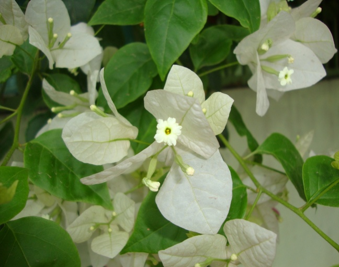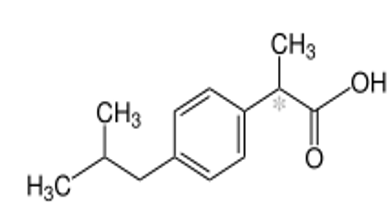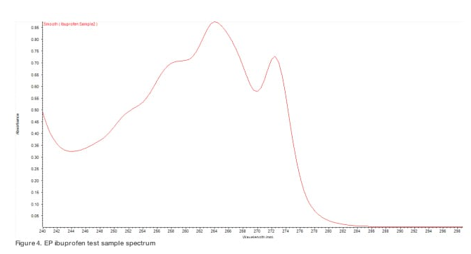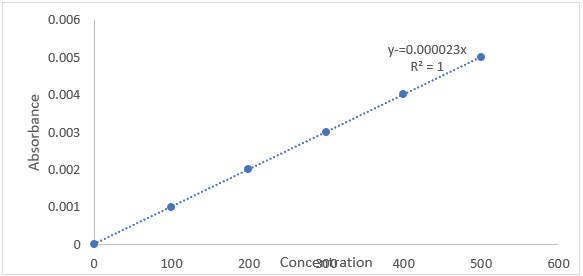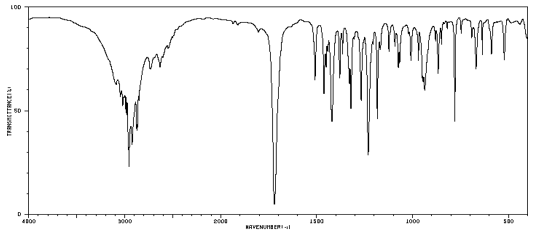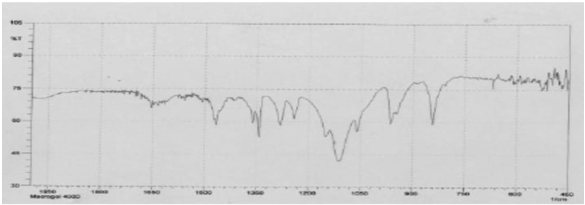Introduction
Bougainvillea Campanulata is a quick growing vine that benefits from support as it climbs structures. Bougainvillea are easy to grow and flower if grown under maximum light and stressed with dryness.1
Bougainvillea Campanulata is named for the stunning golden bracts that grow around the true flowers. It is a free flowing, vigorous, evergreen shrub or vine with clusters of warm white, papery brackets surrounding tiny creamy-white flowers. They are found in Argentina Northeast, Argentina Northwest, Bolivia, Brazil West-Central, Paraguay.
Thrives in full sun or light shade, in acid, well-drained soils. Bougainvillea tolerates hot, dry location fairly well, but dislike constantly wet soils. Good drought tolerance once established, but will look better if watered during dry spells. Water freely summer and sparingly in the winter. Fertilize every two weeks during the growing season. Excellent choice of mass plantings, as specimen plants, wall-side borders, ground covers for banks, in rocky gardens and containers. Can also espaliered or trained on a standard or grown in a large basket.
Regular pruning may be required to keep inbounds or shape the plant. Always prune this plant immediately after flowering. Be aware that repetitive pruning may reduce flowering as this plant flowers on new growth. Pinching the tips of new growth will encourage branching.1 Different extracts of Bougainvillea were subjected to preliminary phytochemical screening for the detection of various phytochemical constituents such as carbohydrates, proteins, amino acids, steroids, tannins, flavonoids, alkaloids, and glycosides.
Ibuprofen
Ibuprofen is a medication in the nonsteroidal anti-inflammatory drug (NSAID) class that is used for treating pain, fever, and, inflammation. Thin includes painful menstrual periods, migraines, and rheumatoid arthritis. It may also be used to close a patent deducts arteriosus in a premature baby. It can used by mouth or intravenously. It typically begins working within an hour. Common side effects include heartburn and a rash. Compared to other NSAIDs, it may have other side effects such as gastrointestinal bleeding. It increases the risk of heart failure, kidney failure, and liver failure. At low doses, it does not appear to increase the risk of heart attack; however, at higher does it may. Ibuprofen can also worsen asthma. While it is unclear whether it is safe in early pregnancy, it appears to be harmful in letter pregnancy therefore is not recommended. Like other NSAIDs, it works by inhibiting the production of prostaglandins by decreasing the activity of the enzyme cyclooxygenase (COX). Ibuprofen is a weaker anti-inflammatory agent than other NSAIDs.2
Ibuprofen is a medication in the nonsteroidal anti-inflammatory drug (NSAID) class that is used for treating pain, fever, and inflammation. This includes painful menstrual periods, migraines, and rheumatoid arthritis. It may also be used to close a patent ductus arteriosus in a premature baby. It can be used by mouth or intravenously. It typically begins working within an hour. Common side effects include heartburn and a rash.
Compared to other NSAIDs, it may have other side effects such as gastrointestinal bleeding. It increases the risk of heart failure, kidney failure, and liver failure. At low doses, it does not appear to increase the risk of heart attack; however, at higher doses it may. Ibuprofen can also worsen asthma.3 While it is unclear whether it is safe in early pregnancy,4 it appears to be harmful in later pregnancy and therefore is not recommended.5 Like other NSAIDs, it works by inhibiting the production of prostaglandins by decreasing the activity of the enzyme cyclooxygenase (COX).4 Ibuprofen is a weaker anti-inflammatory agent than other NSAIDs.3
Ibuprofen was discovered in 1961 by Stewart Adams and John Nicholson6 while working at Boots UK Limited and initially marketed as Brufen.7 It is available under a number of trade names, including Nurofen, Advil and Motrin.4 It was first marketed in 1969 in the United Kingdom and in 1974 in the United States.7, 8 It is on the World Health Organization's List of Essential Medicines.9 It is available as a generic medication. 4 In 2019, it was the 29th most commonly prescribed medication in the United States, with more than 21 million prescriptions.10, 8
Molecular weight: 206.285
Synonym: Isobutylphennyl-propionic acid Ibuprofen, is used primarily to treat fever, mild to moderate pain, painful menstruation, osteoarthritis, dental pain, headaches, and pain from kidney stones. About 60% of people respond to any NSAID; those who do not respond well to a particular one may respond to another.2
It is used for inflammatory diseases such as juvenile idiopathic arthritis and rheumatoid arthritis. It is also used for pericarditis and patent ductus arteriosus.
If a patient is self-treating with over-the-counter Ibuprofen, it should not be taken for more than 10 days, unless the patient has spoken with their doctor. Natural sources of Ibuprofen are ginger, turmeric, capsaicin, valerian root, white willow bark and cats claw.
Experimental
This is the new method we adopted; i.e. the selection of flowers of Bougainville Campanulata which was not done earlier.
Materials and Methods
Preparation of extract
Weight about 10g of Bougainville Campanulata flowers and 250ml of water and undergoes condensation process for 5 hrs. The extract was separated and again condensed for 1 hour on heating mantle at 50°C for 1hr and was stored in volumetric flask kept in refrigerator.
Preparation of reagents
Preparation of test solution
To 100 ml volumetric flask Bougainvillea Campanulata flowers extract and make up with distilled water and filtered. Pipette out 10ml of previously prepared solution and dilute to 100ml with diluent to prepare 1000ug/ml concentration. Then diluted with distilled water for further concentrations.
Determination of wavelength of maximum absorption
Different concentrations (100,200, 300,400, and 500 ug/ml) of test solution was taken and scanned in the range of 200- 400 nm to determine the wave length for maximum absorbance. And it was found that the maximum absorbance at 264 nm.
Method validation
The proposed method was validated for different parameters like linearity, precision, accuracy, specificity, robustness, LOD, LOQ and assay.
Linearity study
The linearity was determined by plotting concentration against corresponding absorbance. Standard stock solutions, 1000μg/mL were further diluted with the diluent to obtain 100 μg/mL-500 μg/mL solutions. The calibration curves were constructed by plotting absorbance versus concentration and the regression equations were calculated.
Precision
Intra-day precision study
Test sample was diluted further to obtain 100-500 ug/ml concentration. Six replicates were measured and the percentage RSD was calculated.
Accuracy and Recovery Studies
Accuracy of the method was calculated by recovery studies at three different levels (75%, 100% and 125%) by standard addition method to study the accuracy of the method and to check the interference from excipients. The first recovery study was conducted on the excipients mixture (placebo) prepared by adding accurately weighed amounts of almond extract to the excipient mixture and calculating the percentage recovery in each case.
Table 3
Results of recovery study
|
%Recovery level |
% Recovery |
Mean % Recovery |
SD |
% RSD |
|
75% |
88.67 |
87.6 |
0.81 |
0.92 |
|
87.54 |
||||
|
86.69 |
||||
|
100% |
85.64 |
85.9 |
0.2 |
0.23 |
|
85.97 |
||||
|
86.12 |
||||
|
125% |
87.32 |
87.36 |
0.442 |
0.05 |
|
86.85 |
||||
|
87.93 |
Robustness
The robustness of an analytical products interfered with the quantification of the drug. Procedure is the measure of its capacity to remain unaffected by small but deliberate variations in method parameters and provides an indication of its reliability during normal usage. It was determined by carrying out the analysis by at different wavelengths i.e. at 265nm, 266 nm and 267 nm. The absorbance was measured and assay was calculated for six times.
Limit of Detection (LOD) and Limit of Quantitation (LOQ)
LOD and LOQ were calculated from the data obtained from the linearity studies. The slope of the linearity plot was determined. For each of the ten replicate determinations of same concentration, standard deviation (SD) of the responses was calculated. Limit of detection can be calculated by using the following formula:
LOD = 3.3 σ /S= 0.9 μg /ml
Limit of quantitation can be calculated based on standard deviation of the response and the slope.
LOQ = 10 σ/S= 2.7 μg /ml
Where σ = Standard deviation of the response; S = Slope of the calibration curve.
Assay of Bougainville Campanulata flowers extract
To analyze the concentration of (Bougainville Campanulata) in the vial, a portion of powder equivalent to 100mg of Bougainville Campanulata flowers extract was transferred in 100ml volumetric flask and was diluted with water This solution was further diluted with water to get final concentration of 100μg/mL of Bougainville Campanulata flowers extract. The % assay of the drug was calculated. All determinations were conducted by thrice time.
IR Interpretation
The functional group identification is made by FTIR analysis and the active components based on the peak value in the region of infrared radiation. The Bougainville Campanulata extract and ibuprofen interpretation is found to be in same and in the nearest range.
Table 7
IR interpretation ibuprofen
|
Functional group |
Peak appearance |
Absorption (cm-1) |
|
N-H |
stretching |
3273.65 |
|
C-H |
stretching |
3068.99 |
|
C-H |
Bending |
2777.97 |
|
C=C |
stretching |
1678.59 |
|
CONH-R |
stretching |
1542.67 |
|
C-H |
def |
1482.29 |
Results and Discussion
The method discussed in the present work provides a convenient and accurate way for analysis of Bougainville Campanulata flowers extract. The different concentrations were scanned and the wavelength of maximum absorption was found at 264 nm. The drug obeyed the Beer‘s law with the concentration range 100-500 ug/ml having line equation y=0.000023x with correlation coefficient r2 of 1. The amount of Ibuprofen present in Bougainville Campanulata flowers extract was found to be 0.007 ug/ml. The LOD and LOQ of the developed method were determined by low concentrations of the standard solution for 6 times and the values of LOD and LOQ were found to be 0.9 μg/mL and 2.7 μg/mL respectively. The recovery values for Ibuprofen present in Bougainville Campanulata flowers extract ranged from 85.64 % - 88.67 %. The percent relative standard deviation (RSD %) of interday precision was 51.35% and intraday precision was 42.95 %. The limit of detection and limit of quantification was 0.9 μg/mL and 2.7 μg/mL. The percent relative standard deviation of robustness of the method was 37.43 – 45.86. And the IR interpretation of both Bougainville Campanulata flowers extract and Ibuprofen were found to have similar functional groups and hence, proposed method was precise, accurate and cost effective. This method could be applicable for quantitative determination of the Ibuprofen present in Bougainville Campanulata flowers extract.
Acknowledgement
We are grateful to SIMS College of Pharmacy because this work has not been completed without their support.
Conclusion
The different concentrations were scanned and the wavelength of maximum absorption was found at 264 nm. The drug obeyed the Beer‘s law with the concentration range 100-500 ug/ml having line equation y=0.000023x with correlation coefficient r2 of 1 and represented excellent linear relationship of the newly developed method. The amount of Ibuprofen present in Bougainville Campanulata flowers extract was found to be 7 ug/ml. Finally we conclude that the proposed method was precise, accurate and cost effective. This method could be applicable for quantitative determination of the Ibuprofen present in Bougainville Campanulata flowers extract.

